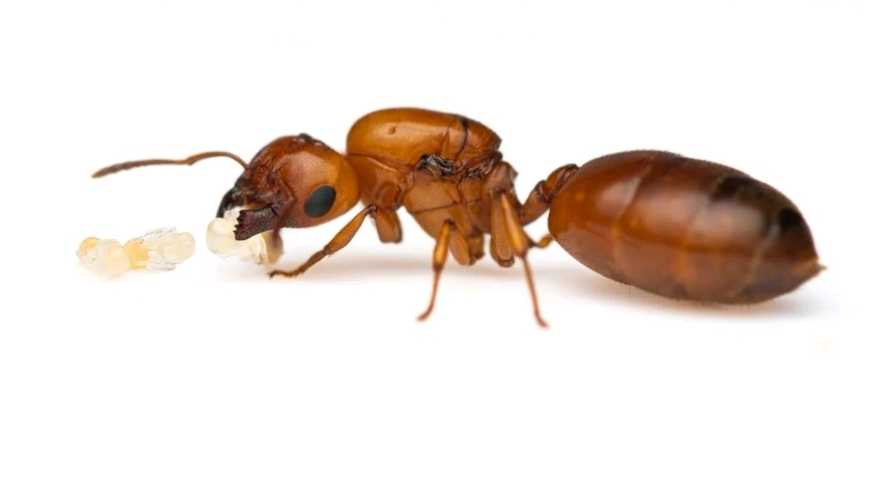Crematogaster castanea: A Guide to the Fascinating Fire Ant Species
Colony Type and Size
Crematogaster castanea, also known as the fire ant, features monogynous colonies with a single queen. These well-structured colonies can reach an impressive size of up to 20,000 workers, enabling them to efficiently handle various tasks and sustain a thriving community.
Development Rate
With their highly organized colony structure and a substantial workforce, Crematogaster castanea exhibits a remarkably fast development rate. The presence of numerous diligent workers allows for rapid population growth and territorial expansion.
Size and Coloration
The queen of Crematogaster castanea measures approximately 9-10mm, while the workers have a slightly smaller size, ranging from 4-6mm. Sporting an eye-catching vivid orange-red body with striking black markings, these ants are easily distinguishable.
Nutrition
Crematogaster castanea ants have diverse dietary requirements, making them omnivorous in nature. They feed on a wide range of food sources, including sweets, proteins, and fats. These resourceful ants can scavenge within their nest and forage in their surrounding environment, exhibiting adaptability to various ecosystems.
To ensure the overall health and productivity of Crematogaster castanea colonies, it is crucial to provide a balanced diet. A combination of sugar-based solutions, protein-rich foods, and occasional treats like fruits or seeds can help meet their nutritional needs.
Humidity and Temperature Requirements
Crematogaster castanea ants thrive within specific humidity and temperature ranges. Creating and maintaining suitable conditions in their habitat contribute significantly to their well-being and success:
- Humidity: Keeping the humidity levels between 30-50% in their hunting area and slightly higher, around 50-70%, within their nest ensures a favorable microclimate for their brood and enhances their survival rate.
- Temperature: Maintaining temperatures between 25-30°C in their hunting area and a cooler range of 22-28°C within their nest replicates their natural habitat conditions. These temperature ranges support their physiological processes and promote robust colony growth.
Recommended Nests for Breeding
Breeding Crematogaster castanea requires providing suitable nest options that cater to their unique needs. Though adaptable, certain nest types are particularly well-suited for their successful breeding:
- Acrylic Nests: Acrylic nests offer excellent visibility, enabling observers to closely monitor ant behavior and colony development. These nests also provide easy maintenance access and allow for precise control over temperature and humidity levels.
- Ytong Nests: Ytong nests, crafted from lightweight, porous material, regulate temperature and humidity effectively. These nests mimic the ants’ natural habitat and provide an ideal environment for brood development.
- Outworlds: Outworlds are essential for the foraging activities of Crematogaster castanea. They facilitate exploration and food gathering while ensuring the nest remains clean and organized.
By selecting suitable nest options for breeding Crematogaster castanea, you can recreate a habitat closely resembling their natural surroundings. This leads to healthier colonies and increased breeding success.















Reviews
There are no reviews yet.